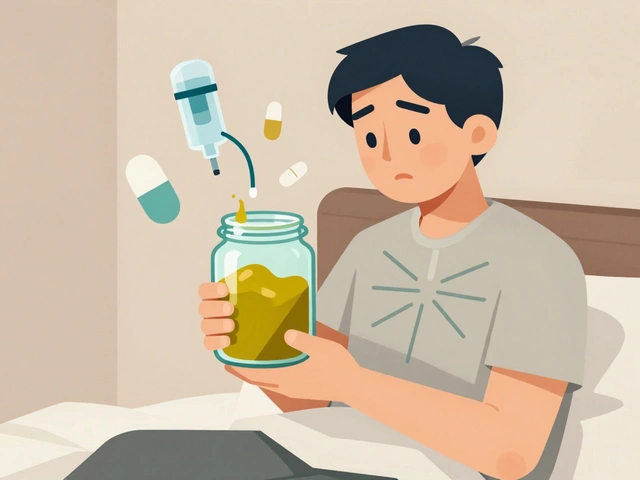Antifungal medication: what they are and when you need them
Fungal infections range from itchy athlete’s foot to serious bloodstream infections. Antifungal medication is the tool doctors use to stop and clear these infections. Some are creams you can buy over the counter; others are pills or IV drugs you need a prescription for. Knowing which one fits your situation saves time and reduces side effects.
Types and common uses
Topical antifungals (creams, sprays, powders) are for skin and mild toenail or vaginal infections. Common OTC names are clotrimazole and miconazole; terbinafine cream works well for ringworm and jock itch. Oral antifungals treat nail infections, persistent yeast, or infections that reach deeper tissues. Fluconazole is often used for vaginal yeast and some systemic infections; terbinafine pills are common for fungal nails and usually taken for weeks. For severe or hospital cases, doctors use IV drugs like amphotericin or echinocandins.
Match the drug to the problem: skin infections usually respond to topical treatment for 2–4 weeks. Nail fungus often needs oral therapy for 6–12 weeks (sometimes longer). Vaginal yeast can clear with a single 150 mg fluconazole dose, but repeated or complicated cases need follow-up.
Safety, interactions, and practical tips
Oral antifungals can affect your liver—ask your provider about baseline liver tests if you’ll take them for weeks. Azole antifungals (fluconazole, itraconazole, voriconazole) interact with many drugs because they block liver enzymes. That can raise levels of statins, warfarin, some anti-anxiety meds, and others. Tell your clinician about all prescriptions and supplements before starting treatment.
Pregnancy matters: many oral azoles are not safe in pregnancy, especially at higher or repeated doses. If you’re pregnant or trying to conceive, avoid taking oral antifungals without medical advice.
Don’t use steroid creams on a suspected fungal rash—steroids can hide symptoms and make fungi spread. For athlete’s foot, keep feet dry, rotate shoes, and wash socks in hot water. Replace old shoes or use antifungal powders to reduce reinfection. Finish the full course even if symptoms vanish early; stopping early can lead to recurrence or resistance. If a nail looks worse despite treatment, see a doctor—nail fungus can be stubborn and sometimes needs combined topical plus oral therapy.
Watch for warning signs that need a doctor now: fever with a rash, rapidly spreading skin infection, infection in someone with a weak immune system, or anything not improving after the recommended treatment window. Also be cautious when buying antifungals online—use licensed pharmacies and don’t take prescription-only pills without a proper diagnosis and prescription.
Short, practical takeaway: start with the right treatment for the right type of infection, tell your clinician about other meds and pregnancy, keep areas clean and dry, and seek medical care when infections are severe, persistent, or involve nails or the bloodstream.
As a blogger, I recently looked into the science behind Clotrimazole and found it quite fascinating. Clotrimazole works by inhibiting the production of ergosterol, a vital component of fungal cell membranes. In doing so, it weakens the fungus's protective barrier, eventually leading to its demise. It's commonly used as a topical treatment for fungal infections like athlete's foot, ringworm, and yeast infections. I'm truly amazed at how this powerful antifungal medication can help fight off these pesky infections!
Continue reading...





